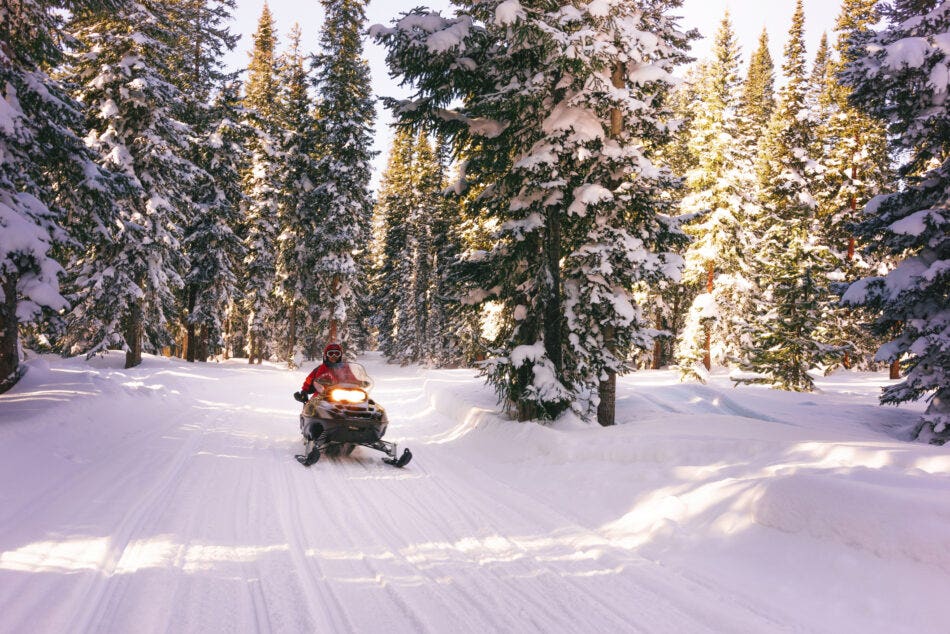Snowmobiling is a beloved winter activity for many Canadians — however, it can come with a lot of risk. On average, 73 snowmobile deaths occur every year in Canada. At Acera Insurance, we want you to focus on the ride instead of the risks and have compiled a list of snowmobile winter safety tips.
Before you head out on the trails, it’s important to:
- Enroll in a snowmobile safety course. If you’re new to snowmobiling, a safety course will teach you the laws and regulations for your area, parts of a snowmobile, riding skills, how to troubleshoot problems and identify hazards and how to manage emergency situations on the trails. A bonus is that once you’ve completed your safety course, you may be eligible for insurance discounts.
- Never drink alcohol and ride your snowmobile. Outside of being charged with a DUI if you are found to be intoxicated while operating a snowmobile, alcohol and drug use was reported in 49% of snowmobile fatalities. Substance abuse can have a negative effect on a driver’s reaction time, coordination, vision and balance, which puts you at a much higher risk for accidents.
- Never ride alone. If you ride with a friend on another snowmobile, you won’t be stranded if there is a problem with your machine.
- Check the weather forecast. Adverse weather conditions can lead to whiteouts and dangerously cold temperatures, which can result in hypothermia, frostbite and snow blindness, which can make riding difficult and unsafe.
- Tell someone where you’re going. Always provide details about where you’re going and what time you should be back. A lot of snowmobile trails can have spotty or non-existent phone reception, so investing in a GPS or inReach system would be a good idea if you spend a lot of time in the backcountry.
- Wear a snowmobile helmet and dress in layers. You should choose polyester blends that wick moisture from the body. If you don’t have a full-face helmet, remember to pack goggles and/or a face shield, gloves and boots that are rated to the temperatures. Your outer layers should repel water, cut the wind and keep you ventilated.
- Stay on the trails. Riding off trail can put you in danger, result in accidents and cause damage to the environment.
- Know your hand signals. The people around you will need to know when you’re going to stop, turn, slow down and when other snowmobilers are approaching you from the front or behind you. You can brush up on snowmobile hand signals here.
- Avoid riding on ice. If you ride your snowmobile on a frozen river or lake, you’ll be at risk for falling through the ice. If you know that you will be riding on ice, make sure to wear a life jacket over your clothes and stay off ice that has moving water underneath or near it since those areas can be unpredictably thin.
- Avoid speeding and pay attention to local laws. Going too fast can lead to some serious trouble, including loss of traction and control. Before you head out, make sure you know what the speed limit is where you’ll be riding.
- Pack a snowmobile safety kit. This should always be with you and include a First Aid kit, basic repair kit for your machine, GPS, small shovel, flares and an ice pick.
- Always carry your proof of insurance and driver’s license. If you plan to snowmobile off your property, it will need to be registered and want it to be insured. You’ll need these documents on hand to show police or conservation officers if requested.
There’s a lot to plan for and consider during snowmobile season — worrying if you have the right insurance coverage shouldn’t be one of them. If you have questions about your snowmobile insurance policy, speak to one of our expert advisors.
Get in touch about off-road insurance by phone or in person at your nearest location.

